- Home
- Randall Garrett
Thin Edge
Thin Edge Read online
Produced by Sankar Viswanathan, Greg Weeks, and the OnlineDistributed Proofreading Team at https://www.pgdp.net
Transcriber's Note:
This etext was produced from Analog Science Fact & Fiction December 1963. Extensive research did not uncover any evidence that the U.S. copyright on this publication was renewed.
THIN EDGE
There are inventions of great value that one type of society can use--and that would, for another society, be most nastily deadly!
BY JOHNATHAN BLAKE MAC KENZIE
ILLUSTRATED BY JOHN SCHOENHERR
* * * * *
I
"Beep!" said the radio smugly. "_Beep! Beep! Beep!_"
"There's one," said the man at the pickup controls of tugship 431. Hechecked the numbers on the various dials of his instruments. Then hecarefully marked down in his log book the facts that the radio finderwas radiating its beep on such-and-such a frequency and that thatfrequency and that rate-of-beep indicated that the asteroid had beenfound and set with anchor by a Captain Jules St. Simon. The directionand distance were duly noted.
That information on direction and distance had already beentransmitted to the instruments of the tugship's pilot. "Jazzy-o!" saidthe pilot. "Got 'im."
He swiveled his ship around until the nose was in line with the beepand then jammed down on the forward accelerator for a few seconds.Then he took his foot off it and waited while the ship approached theasteroid.
In the darkness of space, only points of light were visible. Off tothe left, the sun was a small, glaring spot of whiteness that couldn'tbe looked at directly. Even out here in the Belt, between the orbitsof Mars and Jupiter, that massive stellar engine blasted out enoughenergy to make it uncomfortable to look at with the naked eye. But itcould illuminate matter only; the hard vacuum of space remained dark.The pilot could have located the planets easily, without lookingaround. He knew where each and every one of them were. He had to.
A man can navigate in space by instrument, and he can take the time tofigure out where every planet ought to be. But if he does, he won'treally be able to navigate in the Asteroid Belt.
In the Nineteenth Century, Mark Twain pointed out that a steamboatpilot who navigated a ship up and down the Mississippi had to be ableto identify every landmark and every changing sandbar along the riverbefore he would be allowed to take charge of the wheel. He not onlyhad to memorize the whole river, but be able to predict the changes inits course and the variations in its eddies. He had to be able to knowexactly where he was at every moment, even in the blackest of moonlessnights, simply by glancing around him.
An asteroid man has to be able to do the same thing. The human mind iscapable of it, and one thing that the men and women of the Belt Citieshad learned was to use the human mind.
"Looks like a big 'un, Jack," said the instrument man. His eyes wereon the radar screen. It not only gave him a picture of the body of theslowly spinning mountain, but the distance and the angular and radialvelocities. A duplicate of the instrument gave the same information tothe pilot.
The asteroid was fairly large as such planetary debris went--some fivehundred meters in diameter, with a mass of around one hundredseventy-four million metric tons.
* * * * *
Within twenty meters of the surface of the great mountain of stone,the pilot brought the ship to a dead stop in relation to that surface.
"Looks like she's got a nice spin on her," he said. "We'll see."
He waited for what he knew would appear somewhere near the equator ofthe slowly revolving mass. It did. A silvery splash of paint that hadoriginally been squirted on by the anchor man who had first spottedthe asteroid in order to check the rotational velocity.
The pilot of the space tug waited until the blotch was centered in thecrosshairs of his peeper and then punched the timer. When it camearound again, he would be able to compute the angular momentum of thegigantic rock.
"Where's he got his anchor set?" the pilot asked his instrument man.
"The beep's from the North Pole," the instrument man reportedinstantly. "How's her spin?"
"Wait a bit. The spot hasn't come round again yet. Looks like we'llhave some fun with her, though." He kept three stars fixed carefullyin his spotters to make sure he didn't drift enough to throw hiscalculations off. And waited.
Meanwhile, the instrument man abandoned his radar panel and turned tothe locker where his vacuum suit waited at the ready. By the time thepilot had seen the splotch of silver come round again and timed it,the instrument man was ready in his vacuum suit.
"Sixteen minutes, forty seconds," the pilot reported. "Angularmomentum one point one times ten to the twenty-first gram centimeterssquared per second."
"So we play Ride 'Em Cowboy," the instrument man said "I'm evacuating.Tell me when." He had already poised his finger over the switch thatwould pull the air from his compartments, which had been sealed offfrom the pilot's compartment when the timing had started.
"Start the pump," said the pilot.
The switch was pressed, and the pumps began to evacuate the air fromthe compartment. At the same time, the pilot jockeyed the ship to aposition over the north pole of the asteroid.
"Over" isn't quite the right word. "Next to" is not much better, butat least it has no implied up-and-down orientation. The surfacegravity of the asteroid was only two millionths of a Standard Gee,which is hardly enough to give any noticeable impression to the humannervous system.
"Surface at two meters," said the pilot. "Holding."
* * * * *
The instrument man opened the outer door and saw the surface of thegigantic rock a couple of yards in front of him. And projecting fromthat surface was the eye of an eyebolt that had been firmly anchoredin the depths of the asteroid, a nickel-steel shaft thirty feet longand eight inches in diameter, of which only the eye at the end showed.
The instrument man checked to make sure that his safety line wasfirmly anchored and then pushed himself across the intervening spaceto grasp the eye with a space-gloved hand.
This was the anchor.
Moving a nickel-iron asteroid across space to nearest processing plantis a relatively simple job. You slap a powerful electromagnet on her,pour on the juice, and off you go.
The stony asteroids are a different matter. You have to have somethingto latch on to, and that's where the anchor-setter comes in. His jobis to put that anchor in there. That's the first space job a man canget in the Belt, the only way to get space experience. Working byhimself, a man learns to preserve his own life out there.
Operating a space tug, on the other hand, is a two-man job because aman cannot both be on the surface of the asteroid and in his ship atthe same time. But every space tug man has had long experience as ananchor setter before he's allowed to be in a position where he iscapable of killing someone besides himself if he makes a stupidmistake in that deadly vacuum.
"On contact, Jack," the instrument man said as soon as he had a firmgrip on the anchor. "Release safety line."
"Safety line released, Harry," Jack's voice said in his earphones.
Jack had pressed a switch that released the ship's end of the safetyline so that it now floated free. Harry pulled it towards himself andattached the free end to the eye of the anchor bolt, on a loop ofnickel-steel that had been placed there for that purpose. "Safety linesecured," he reported. "Ready for tug line."
In the pilot's compartment, Jack manipulated the controls again. Theship moved away from the asteroid and yawed around so that the "tail"was pointed toward the anchor bolt. Protruding from a special port wasa heavy-duty universal j
oint with special attachments. Harry reachedout, grasped it with one hand, and pulled it toward him, guiding ittoward the eyebolt. A cable attached to its other end snaked out ofthe tug.
Harry worked hard for some ten or fifteen minutes to get the universaljoint firmly bolted to the eye of the anchor. When he was through, hesaid: "O.K., Jack. Try 'er."
The tug moved gently away from the asteroid, and the cable that boundthe two together became taut. Harry carefully inspected his handiworkto make sure that everything had been done properly and that themechanism would stand the stress.
"So far so good," he muttered, more to himself than to Jack.
Then he carefully set two compact little strain gauges on the anchoritself, at ninety degrees from each other on the circumference of thehuge anchor bolt. Two others were

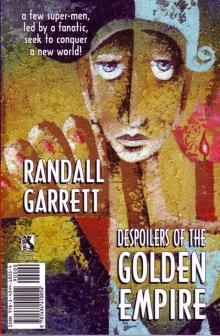 Despoilers of the Golden Empire
Despoilers of the Golden Empire The Highest Treason
The Highest Treason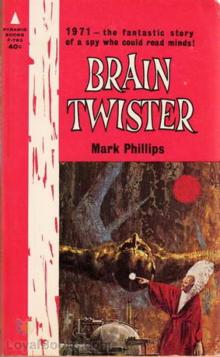 Brain Twister
Brain Twister The Judas Valley
The Judas Valley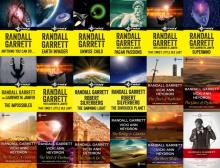 The Impossibles
The Impossibles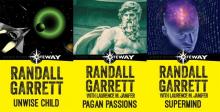 Pagan Passions
Pagan Passions Quest of the Golden Ape
Quest of the Golden Ape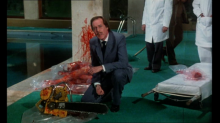 Psichopath
Psichopath By Proxy
By Proxy Damned If You Don't
Damned If You Don't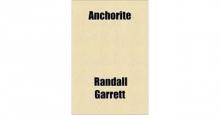 Anchorite
Anchorite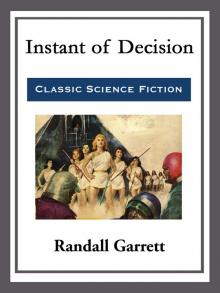 Instant of Decision
Instant of Decision The Bramble Bush
The Bramble Bush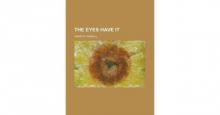 The Eyes Have It
The Eyes Have It Dead Giveaway
Dead Giveaway ...After a Few Words...
...After a Few Words... Black Eyes and the Daily Grind
Black Eyes and the Daily Grind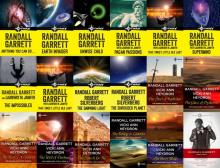 That Sweet Little Old Lady
That Sweet Little Old Lady With No Strings Attached
With No Strings Attached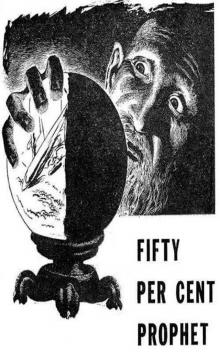 Fifty Per Cent Prophet
Fifty Per Cent Prophet The Asses of Balaam
The Asses of Balaam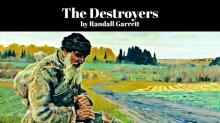 The Destroyers
The Destroyers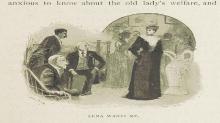 But, I Don't Think
But, I Don't Think Cum Grano Salis
Cum Grano Salis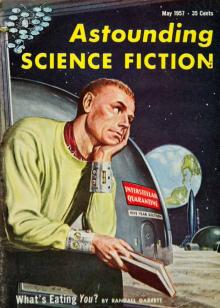 In Case of Fire
In Case of Fire Hanging by a Thread
Hanging by a Thread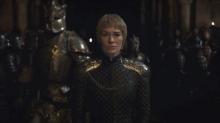 Heist Job on Thizar
Heist Job on Thizar A World by the Tale
A World by the Tale Nor Iron Bars a Cage....
Nor Iron Bars a Cage.... Suite Mentale
Suite Mentale The Man Who Hated Mars
The Man Who Hated Mars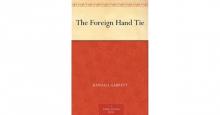 The Foreign Hand Tie
The Foreign Hand Tie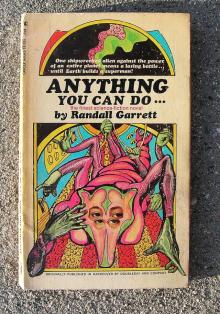 Anything You Can Do ...
Anything You Can Do ...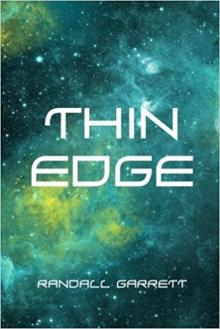 Thin Edge
Thin Edge ...Or Your Money Back
...Or Your Money Back Viewpoint
Viewpoint Hail to the Chief
Hail to the Chief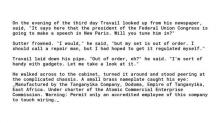 Made in Tanganyika
Made in Tanganyika Lord Darcy Investigates
Lord Darcy Investigates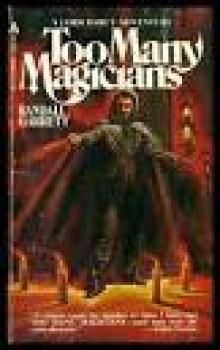 Too Many Magicians
Too Many Magicians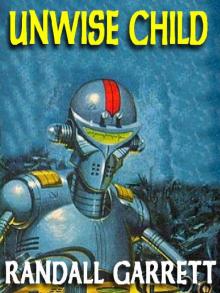 Unwise Child
Unwise Child A Spaceship Named McGuire
A Spaceship Named McGuire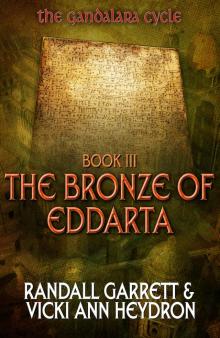 The Bronze of Eddarta
The Bronze of Eddarta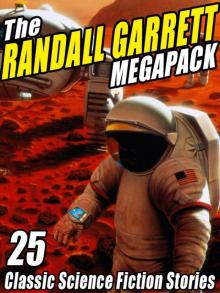 The Randall Garrett Megapack
The Randall Garrett Megapack Return to Eddarta
Return to Eddarta Too Many Magicians (lord darcy)
Too Many Magicians (lord darcy) The Well of Darkness
The Well of Darkness Takeoff!
Takeoff!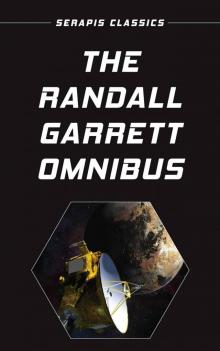 The Randall Garrett Omnibus
The Randall Garrett Omnibus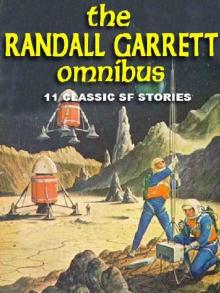 The Randall Garrett Omnibus: Eleven SF Classics
The Randall Garrett Omnibus: Eleven SF Classics The Second Randall Garrett Megapack
The Second Randall Garrett Megapack The River Wall
The River Wall The Glass of Dyskornis
The Glass of Dyskornis The Search for Kä
The Search for Kä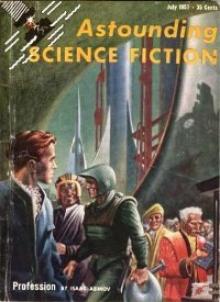 The Best Policy
The Best Policy